South America, a continent known for its stunning landscapes and vibrant cultures, offers a treasure trove of culinary delights waiting to be discovered. From the spicy and aromatic dishes of Mexico to the meaty feasts of Argentina, South American food is a fascinating journey where tradition, innovation, and culture collide. Join us on a detailed exploration of the tantalizing world of South American cuisine.
South America, a continent characterized by its astounding natural landscapes, diverse traditions, and rich cultures, is a place where history, art, music, and customs converge. From the rhythmic beats of samba in Brazil to the mystique of Machu Picchu in Peru, South America is a living museum of the world’s diverse cultures. In this comprehensive blog, we’ll embark on a detailed cultural odyssey to unveil the enchanting world of South American culture.
Indigenous Heritage and Diversity:
South America is home to a rich tapestry of indigenous cultures. These communities, including the Quechua in Peru, Aymara in Bolivia, Mapuche in Chile, and many others, possess unique customs, languages, and traditions that have been preserved for centuries. They are the living embodiment of South America’s indigenous heritage, and their influence permeates every aspect of the continent’s culture, from art and music to spirituality.
Colonial History and Its Legacy:
The colonization of South America by European powers, primarily Spain and Portugal, profoundly shaped the continent’s cultural landscape. This influence is most evident in:
Language and Religion:
- The Spanish language dominates South America, with Portuguese being the primary language in Brazil.
- Catholicism is the predominant religion, with impressive cathedrals, churches, and religious festivals forming an integral part of South American life.
Music and Dance: The Heartbeat of South America:
Music and dance are at the core of South American culture, with each region boasting its unique styles:
1. Argentina: Where Gastronomy and Culture Unite
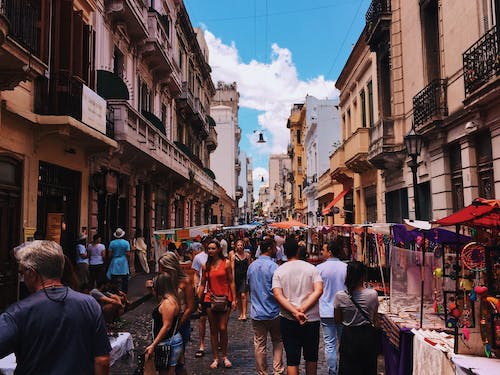
Argentina, the land of tango, soccer, and dramatic landscapes, is a country where culinary traditions are tightly woven into the fabric of its culture. With influences from Europe, particularly Italy and Spain, as well as the unique Gaucho culture, Argentina offers a gastronomic journey that reflects its diverse heritage. Let’s delve into the culinary delights and cultural elements that make Argentina a remarkable destination for both food and culture enthusiasts.
1. The Art of Asado
At the heart of Argentine cuisine lies the art of the asado. Asado is not just a way to prepare meat; it’s a cultural practice, a social event, and a sacred tradition. It involves grilling various cuts of beef, sausages, and sometimes even organ meats over open flames.
a. The Gaucho Tradition:
- The tradition of the asado can be traced back to the gauchos, Argentine cowboys, who cooked their meals over open fires on the vast Pampas. The spirit of the gaucho lives on in the art of the asado.
b. Cuts of Meat:
- Argentina’s love affair with beef is evident in the variety of cuts used for asado. From succulent ribeye steaks to flavorful flank steaks and morcilla (blood sausages), every part of the cow finds a place on the grill.
c. Sauces and Accompaniments:
- Chimichurri, a zesty sauce made from parsley, garlic, vinegar, and red pepper flakes, is the quintessential companion for asado. It enhances the flavors of the grilled meat.
2. Empanadas: A Flavorful Tradition
Empanadas are a beloved snack that reflects the fusion of Spanish and indigenous influences in Argentine cuisine. These crescent-shaped pastries are typically filled with ingredients such as ground beef, onions, olives, hard-boiled eggs, and spices.
3. Mate: The National Beverage
Argentina’s national beverage, mate, is more than just a drink; it’s a social custom and a symbol of togetherness. People share mate by passing around a hollowed-out gourd filled with dried yerba mate leaves and hot water, sipped through a metal straw. This ritual fosters a sense of community and connection among friends and family.
4. Italian Influence: Pizza and Pasta
The Italian influence on Argentine cuisine is unmistakable, with pizza and pasta being widely popular. Argentina’s love for these dishes is a testament to the Italian immigrant population that settled in the country. Argentine pizza, often thicker and with unique toppings, offers a delicious twist on the classic.
5. Wine: A Toast to Tradition
Argentina’s wine culture is deeply rooted in its European heritage, particularly Spanish and Italian winemaking traditions. The country is renowned for its exceptional Malbec wines, produced mainly in the Mendoza region. A glass of Argentine Malbec pairs beautifully with a hearty asado or Italian-inspired pasta.
6. Music and Dance: The Rhythm of Tango
Tango, often considered Argentina’s greatest cultural export, is a dramatic and passionate dance that tells stories of love, longing, and desire. Tango music, with its haunting melodies and evocative lyrics, is an integral part of the dance.
a. The Birth of Tango:
- Buenos Aires, the capital of Argentina, is the birthplace of tango. The city’s historic neighborhoods, like San Telmo, provide a glimpse into the early tango culture.
b. Milongas:
- Milongas are social events where tango enthusiasts gather to dance. These gatherings encapsulate the essence of the dance and are an excellent way to experience Argentine culture firsthand.
7. Street Food: A Slice of Local Life
Exploring street food in Argentina is an authentic way to connect with local culture. You’ll find food carts and small stands serving traditional snacks like choripán (sausage sandwiches), panchos (hot dogs), and deliciously greasy fried empanadas.
2. Bolivia: A Feast of Culture and Cuisine
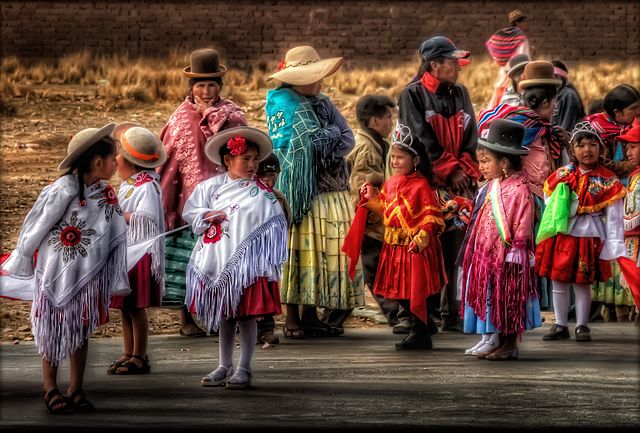
Nestled in the heart of South America, Bolivia is a nation rich in cultural diversity and culinary wonders. Its heritage is a tapestry woven from indigenous traditions, colonial legacies, and contemporary innovations. Let’s embark on a journey to explore the captivating interplay of food and culture in Bolivia.
1. Indigenous Roots: Aymara and Quechua Heritage
Bolivia’s indigenous heritage is a defining element of its culture. The Aymara and Quechua peoples have deeply influenced the country’s customs, languages, and cuisine.
a. Traditional Dishes:
- Salteñas: These savory pastries, filled with a mixture of meat, vegetables, olives, and hard-boiled eggs, offer a burst of flavors in every bite.
- Quinoa: A nutrient-rich grain, quinoa has been a dietary staple for centuries and continues to be an essential part of Bolivian cuisine.
b. Music and Dance:
- Indigenous music and dance, often accompanied by traditional instruments like the pan flute and charango, reflect the Aymara and Quechua cultures. The rhythms of these dances are used in celebrations and rituals.
2. Street Food Delights
a. Salteñas:
- Salteñas are not just traditional, they’re also a popular street food. These warm, baked pastries with various fillings are often enjoyed as a quick snack or breakfast item.
b. Anticuchos:
- Anticuchos, skewered and grilled marinated beef hearts, are a flavorful street food dish. They are often served with potatoes and a spicy peanut sauce.
3. Bolivia’s Culinary Highlights
a. Silpancho:
- Silpancho is a hearty Bolivian dish that consists of a breaded and fried beef cutlet, served over a bed of rice and topped with fried eggs, onions, and potatoes.
b. Chuño:
- Chuño is a traditional Andean food made by freezing and drying potatoes. It is an essential ingredient in many Bolivian dishes.
c. Sajta de Pollo:
- Sajta de Pollo is a spicy chicken stew with potatoes and served with rice. The dish reflects the country’s love for vibrant and bold flavors.
4. Traditional Drinks
a. Singani:
- Singani is Bolivia’s national spirit, made from distilled grapes. It is used to craft a variety of cocktails and is an integral part of Bolivian celebrations.
b. Api and Emoliente:
- Api is a warm and thick Bolivian drink made from purple maize, often flavored with cinnamon and served with empanadas. Emoliente is a herbal tea, believed to have health benefits.
5. Music and Dance: A Vibrant Melody
Bolivia’s music and dance are expressive and vibrant, reflecting a mixture of indigenous and European influences.
a. Cueca:
- The cueca, Bolivia’s national dance, is a lively and flirtatious dance that tells stories of love, courtship, and national pride. It is characterized by intricate footwork and handkerchief twirls.
b. Folk Music:
- Bolivian folk music is diverse, with rhythms varying by region. The charango, a small guitar-like instrument, is often used in folk music and adds a distinctive element to Bolivian culture.
6. Art and Craftsmanship
a. Textiles:
- Bolivia is known for its vibrant and intricately woven textiles. Each region has its distinctive style, reflecting the culture and traditions of the local indigenous communities.
b. Silver and Metalwork:
- Silver and metalwork are traditional crafts in Bolivia, especially in the cities of Potosí and Sucre. Artisans create beautifully detailed pieces that incorporate indigenous and colonial influences.
c. Carnival of Oruro:
- The Carnival of Oruro is a UNESCO-recognized cultural event that combines indigenous traditions, music, dance, and religious celebration. It is a testament to Bolivia’s rich cultural tapestry.
3. Brazil: Where Culture and Cuisine Dance in Harmony

Brazil, the largest country in South America, is a vibrant tapestry of cultures, traditions, and culinary delights. From the lively samba rhythms to the rich flavors of churrasco, Brazilian culture and cuisine are a feast for the senses. Let’s embark on a journey to explore the captivating blend of food and culture in Brazil.
1. Samba and Carnival: The Heartbeat of Brazil
Samba, with its infectious rhythms and energetic dance, is at the core of Brazilian culture. It’s not just a musical genre; it’s a way of life. The world-famous Carnival in Rio de Janeiro is the ultimate expression of samba, a spectacular celebration of music, dance, and vibrant costumes that brings the country together.
2. Feijoada: The National Dish
Feijoada, often considered Brazil’s national dish, is a hearty black bean stew that features a variety of pork cuts, such as sausage, bacon, and ribs. It’s served with rice, collard greens, and slices of orange. This dish reflects Brazil’s diverse culinary heritage, a fusion of indigenous, Portuguese, and African influences.
3. Churrasco: A Meat Lover’s Paradise
Churrasco, Brazilian barbecue, is a carnivore’s delight. Various cuts of beef, pork, chicken, and sausages are skewered, seasoned, and grilled to perfection over open flames. The churrascarias, Brazilian steakhouses, offer an endless parade of skewers, brought to your table until you’ve had your fill.
4. Caipirinha: Brazil’s Signature Cocktail
Caipirinha is a refreshing cocktail that encapsulates the spirit of Brazil. It’s made from cachaca (a Brazilian sugarcane spirit), lime, sugar, and ice. The drink is both sweet and tangy, making it the perfect complement to a warm Brazilian day or a festive night of samba and Carnival.
5. Music and Dance: A Cultural Kaleidoscope
Brazil is a melting pot of musical styles and dances. Besides samba, the country boasts a rich variety of rhythms and dances, including:
a. Forró: A dance originating from Northeast Brazil, Forró is characterized by quick footwork and a festive atmosphere. It’s an essential part of local culture.
b. Bossa Nova: A more mellow and melodious genre, bossa nova originated in Brazil and became popular worldwide. It’s known for its smooth and enchanting rhythms.
c. Capoeira: Capoeira is a unique Brazilian martial art that combines elements of dance, acrobatics, and music. It’s not just a physical practice but also a cultural expression.
6. Bahian Cuisine: African and Indigenous Influences
The state of Bahia in northeastern Brazil is renowned for its distinctive cuisine, which showcases African and indigenous influences. Dishes like acarajé (deep-fried black-eyed pea balls filled with shrimp) and moqueca (a flavorful seafood stew) are emblematic of Bahian cuisine.
7. Art and Festivals: Salvador and the Carnival of Bahia
Salvador, the capital of Bahia, is known for its rich artistic traditions and the grand Carnival of Bahia. This Carnival is second in size only to the one in Rio de Janeiro and features incredible music, dance, and elaborate costumes.
8. Brazilian Coffee: A National Treasure
Brazil is one of the world’s largest coffee producers. Brazilian coffee, known for its rich and bold flavor, is a beloved national treasure. A cup of freshly brewed Brazilian coffee is an essential part of daily life.
4. Chile: A Culinary and Cultural Kaleidoscope
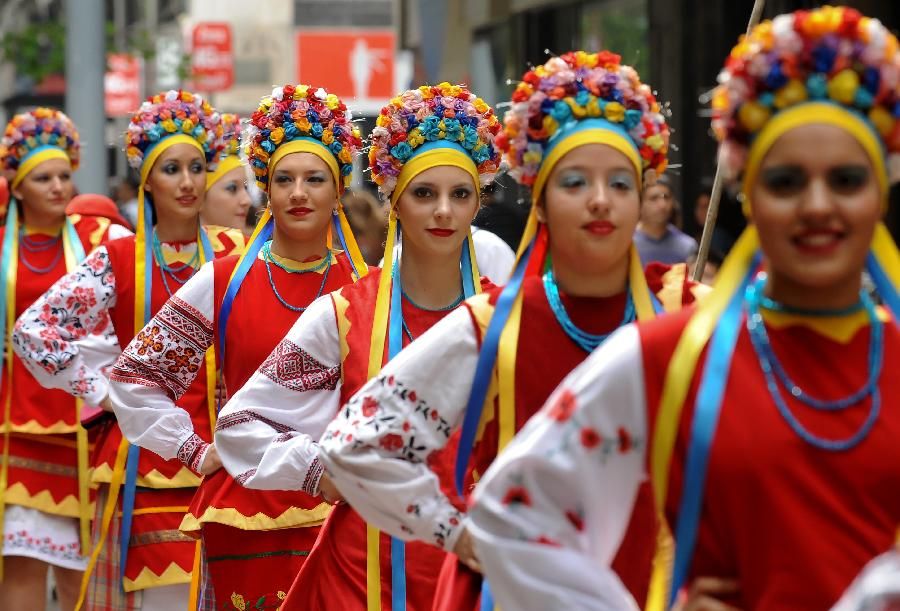
Chile, a country stretched along the southwestern edge of South America, is a land of rich cultural diversity and culinary wonders. The fusion of indigenous traditions, European influence, and modern innovations creates a unique blend of culture and cuisine. Let’s embark on a journey to explore the fascinating interplay of food and culture in Chile.
1. Indigenous Roots: Mapuche Heritage
Chile’s indigenous Mapuche people have a profound influence on the country’s culture and cuisine. Their heritage is reflected in Chilean arts, crafts, and, notably, their culinary traditions.
a. Traditional Dishes:
- Curanto: A cherished dish, curanto is prepared by cooking a mix of seafood, meat, and vegetables in an earth pit, covered with nalca leaves. It’s a culinary testament to the Mapuche way of cooking.
b. Music and Dance:
- Mapuche culture is celebrated through music and dance, particularly during traditional ceremonies. The rhythms of kultrún drums and melodic chants add to the cultural tapestry.
2. Seafood: A Coastal Delight
Chile’s extensive coastline plays a pivotal role in its culinary traditions. The country is known for its exceptional seafood, which influences both traditional and modern dishes.
a. Ceviche:
- A fresh and zesty dish, Chilean ceviche is made with a variety of seafood, typically white fish, marinated in lime juice and adorned with cilantro, onions, and aji peppers.
b. Chilean Seafood Stews:
- Dishes like paila marina and mariscal, seafood stews teeming with diverse maritime ingredients, are popular along the coast. These stews showcase the country’s love for flavors from the sea.
3. Wine Culture: From the Vineyards
Chile is renowned for its thriving wine industry. The country’s winemaking traditions have deep European roots, with strong influences from Spanish and French winemakers.
a. The Chilean Wine Route:
- Chile’s wine regions, such as the Maipo and Colchagua Valleys, offer vineyard tours, wine tastings, and a chance to savor some of the world’s finest wines, notably the iconic Cabernet Sauvignon and Carmenere varietals.
4. Traditional Foods and Flavors
a. Empanadas:
- Empanadas, savory pastries filled with a range of ingredients like beef, onions, olives, and hard-boiled eggs, are a staple in Chilean cuisine. They are commonly enjoyed as a snack or appetizer.
b. Pebre:
- Pebre, a spicy Chilean condiment made from ingredients like cilantro, onions, and aji peppers, is served with empanadas and various dishes. It adds a delightful kick of flavor.
c. Completo:
- A beloved street food, completo is a Chilean-style hot dog piled high with ingredients like sauerkraut, avocado, and mayonnaise, offering a delicious mix of flavors and textures.
5. Music and Dance: Cueca and More
Chilean culture is rich with music and dance, reflecting a mix of indigenous and Spanish traditions.
a. Cueca:
- Cueca, the national dance of Chile, is a lively and flirtatious dance that involves intricate footwork and handkerchief waving. It tells stories of love, courtship, and national pride.
b. Folk Music:
- Chile’s folk music, often accompanied by instruments like the guitar, reflects the country’s cultural diversity. Musicians like Violeta Parra have made significant contributions to the folk music scene.
6. Historical Heritage: Chiloé Island and Easter Island
a. Chiloé Island:
- The culture of Chiloé Island, located in southern Chile, is shaped by its maritime heritage and isolation. The island boasts unique traditions, including colorful palafitos (stilt houses) and distinctive wooden churches.
b. Easter Island (Rapa Nui):
- Easter Island, known as Rapa Nui, is famous for its colossal moai statues, which offer a glimpse into the island’s Polynesian and Chilean heritage. Traditional Rapa Nui culture is celebrated through music, dance, and arts.
5. Colombia: A Culinary and Cultural Treasure Trove
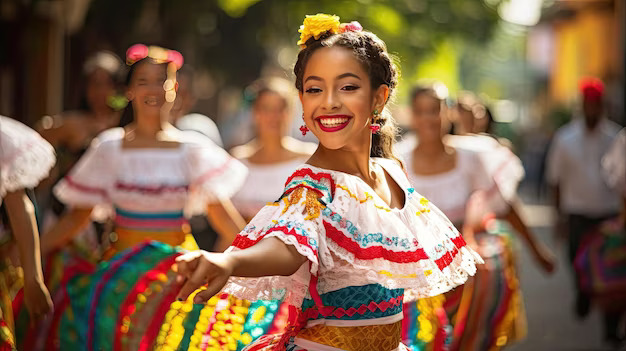
Colombia, a country known for its stunning landscapes and vibrant culture, is a hidden gem when it comes to cuisine and traditions. From the lively sounds of cumbia to the mouthwatering flavors of arepas and empanadas, Colombian culture and cuisine are a delightful fusion of indigenous, Spanish, African, and even Middle Eastern influences. Let’s embark on a journey to explore the captivating interplay of food and culture in Colombia.
1. Cumbia and Vallenato: Rhythms of Colombia
Cumbia, a lively dance and music genre, and Vallenato, known for its accordion melodies, are the heartbeats of Colombian music. These rhythms have deep indigenous and African roots and are celebrated throughout the country, especially during festivals and celebrations.
2. Arepas: Colombia’s Beloved Staple
Arepas, thick cornmeal patties that are grilled or fried, are a quintessential part of Colombian cuisine. These versatile pockets of deliciousness can be served with a variety of fillings, such as cheese, meat, or eggs. Arepas are not just a food; they’re a cultural symbol of Colombia.
3. Bandeja Paisa: The Feast on a Plate
Bandeja Paisa is a hearty Colombian dish that embodies the country’s culinary diversity. This generous platter includes beans, rice, ground beef, chicharrón (crispy pork belly), fried egg, ripe plantain, avocado, and arepa. It’s a true feast, highlighting the rich flavors of Colombia.
4. Coffee: A National Treasure
Colombian coffee is renowned worldwide for its quality and flavor. The coffee culture in Colombia is not just about the brew; it’s a way of life. You can visit coffee plantations in the Coffee Triangle and experience the art of coffee cultivation.
5. Sancocho: A Hearty Stew
Sancocho is a comforting Colombian stew, often considered a national dish. It’s made with a variety of ingredients, such as chicken, beef, or fish, along with potatoes, plantains, yuca (cassava), and corn. The result is a flavorful and nourishing meal.
6. Tejo: A Traditional Game
Tejo is a traditional Colombian game that combines elements of sport and socializing. It involves throwing metal disks at a target filled with explosive materials, aiming for a “tejo” or bullseye. Tejo is often enjoyed with friends and beer.
7. Gold Museum: Indigenous Heritage
The Gold Museum in Bogotá houses an extensive collection of pre-Columbian gold artifacts, offering insights into the rich heritage of indigenous cultures in Colombia. The intricate craftsmanship and symbolism of these artifacts are a testament to the country’s history.
8. Aguardiente: The National Spirit
Aguardiente is Colombia’s national spirit, a strong anise-flavored liquor. It’s often consumed during celebrations and gatherings, contributing to the festive atmosphere of Colombian culture.
9. Folklore and Festivals: Carnaval de Barranquilla
The Carnaval de Barranquilla is one of Colombia’s most renowned cultural festivals. It features vibrant parades, traditional dances, and colorful costumes. It’s a lively celebration of Colombian culture and a UNESCO-recognized event.
10. Empanadas: A Portable Delight
Empanadas are a beloved snack in Colombia. These pastries are filled with various ingredients, such as ground beef, potatoes, and peas. They are often deep-fried and served with aji sauce for added flavor.
6. Ecuador: A Culinary and Cultural Odyssey
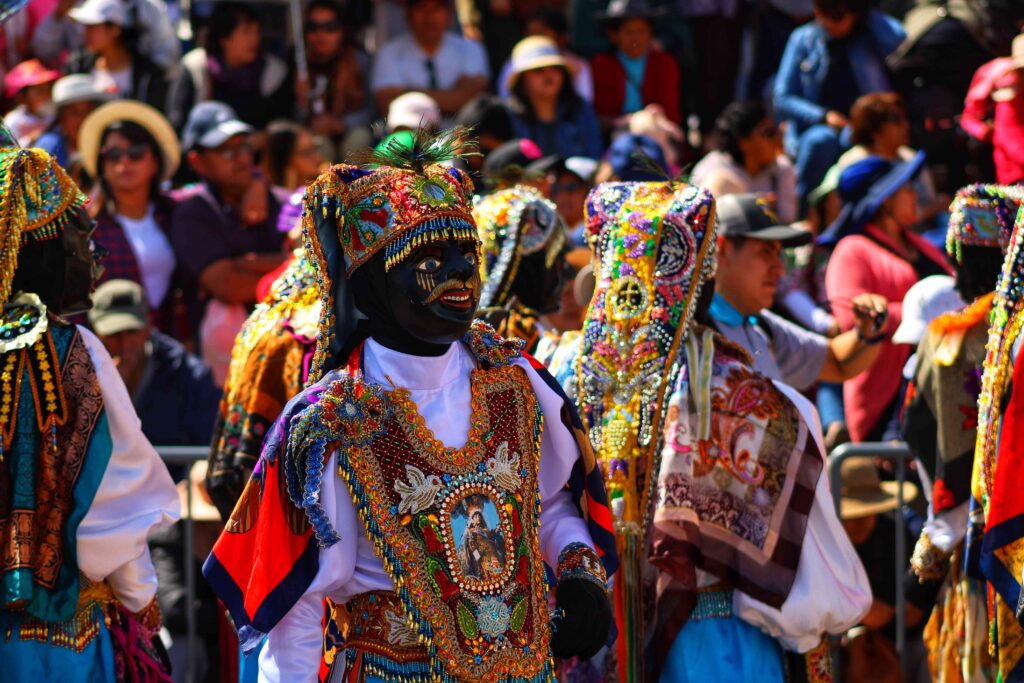
Ecuador, a small but geographically diverse country in South America, boasts a rich tapestry of culture and cuisine. Its history, indigenous traditions, Spanish influence, and stunning landscapes contribute to the unique blend of flavors and customs that define the Ecuadorian experience. Let’s embark on a journey to explore the captivating interplay of food and culture in Ecuador.
1. Indigenous Roots: Kichwa and Shuar Heritage
Ecuador’s indigenous heritage is an integral part of its culture, with the Kichwa and Shuar people being two prominent indigenous groups. Their customs, languages, and traditional dishes influence Ecuador’s cultural identity.
a. Traditional Dishes:
- Ecuadorian Ceviche: Ecuador’s take on ceviche often features shrimp or fish marinated in lime juice and served with popcorn and roasted corn nuts.
- Locro de Papa: A hearty potato soup, locro de papa is often garnished with cheese, avocado, and fresh herbs, showcasing indigenous ingredients.
b. Music and Dance:
- Indigenous music and dance are a significant part of Ecuadorian culture. The melodies of Andean instruments like the pan flute and drum accompany traditional dances, connecting people to their ancestral heritage.
2. Cuy: A Culinary Delicacy
Cuy, or guinea pig, is a traditional Ecuadorian dish. This small rodent is often roasted or fried whole and served with a variety of accompaniments. While it might not be for everyone, trying cuy is a unique culinary experience.
3. Quito and the Historic Center
The historic center of Quito, Ecuador’s capital, is a UNESCO World Heritage site. Its well-preserved colonial architecture, ornate churches, and charming squares offer a glimpse into the country’s Spanish colonial past and vibrant culture.
4. Encebollado: A Coastal Classic
Encebollado is a flavorful fish stew hailing from the coastal regions of Ecuador. It features tuna, yuca (cassava), onions, and a flavorful broth often spiked with spices and served with plantain chips.
5. Galápagos Islands: Natural Wonders and Wildlife
The Galápagos Islands, a province of Ecuador, are a living testament to the wonders of nature. This unique ecosystem is home to diverse wildlife, including giant tortoises, marine iguanas, and blue-footed boobies, and has a significant impact on Ecuadorian culture and conservation efforts.
6. The Middle of the World: La Mitad del Mundo
Ecuador is famous for its location on the equator. The Mitad del Mundo monument and museum commemorate this geographical significance and offer a fun opportunity to straddle the northern and southern hemispheres.
7. Street Food: Adventures in Flavor
Ecuadorian street food is a window into the country’s culinary traditions. From tamales and empanadas to llapingachos (potato patties) and hornado (roast pork), the streets come alive with flavors and aromas.
8. Cacao and Chocolate: A Delight for the Senses
Ecuador is renowned for its high-quality cacao, and its fine chocolates have earned international acclaim. Visitors can explore cacao farms and indulge in tastings to learn about the chocolate-making process.
9. Amazon Rainforest: Indigenous Cultures and Biodiversity
Ecuador’s Amazon rainforest is home to indigenous communities that have maintained their traditions for centuries. The rainforest’s biodiversity and the intricate relationship between people and nature are significant cultural elements.
7. Guyana: A Mosaic of Culture and Cuisine
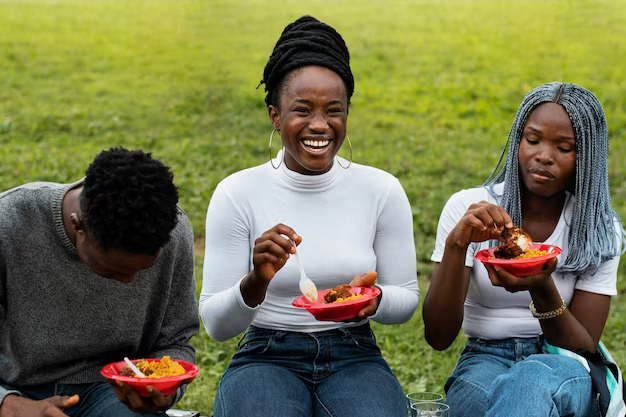
Guyana, a small South American nation on the northeastern coast, is a cultural melting pot where East Indian, African, Amerindian, and European influences have shaped a diverse tapestry of customs and flavors. The country’s rich history, multi-ethnic society, and unique blend of cultures have given rise to a vibrant culinary scene. Let’s explore the captivating interplay of food and culture in Guyana.
1. Multicultural Heritage: Indo-Guyanese and Afro-Guyanese Traditions
Guyana’s population is a rich amalgamation of Indo-Guyanese, Afro-Guyanese, and indigenous Amerindian communities, each contributing to the country’s culture and cuisine.
a. Indo-Guyanese Cuisine:
- Guyana’s Indo-Guyanese community has brought vibrant flavors to the country. Dishes like curry, roti, dhal, and aloo (potatoes) are staples of their cuisine. Curried chicken, dhal puri (stuffed flatbreads), and roti rolls filled with various curries are popular choices.
b. Afro-Guyanese Influence:
- Afro-Guyanese cuisine is known for its soulful and hearty dishes. Pepperpot, a spicy meat stew, and cook-up rice, a one-pot meal featuring rice, beans, and various meats, are beloved classics.
2. Pepperpot: A Hearty Stew
Pepperpot is considered Guyana’s national dish, and it’s a true reflection of the country’s diverse culinary heritage. This slow-cooked stew features a combination of meats, cassareep (a bitter, dark sauce made from cassava), and fiery spices.
3. Music and Dance: Calypso and Chutney
Guyana’s music scene is vibrant, with influences from calypso, chutney, and reggae. These musical genres, often accompanied by energetic dance, add to the cultural richness of the country.
4. Amerindian Traditions: Cassava and Farine
Guyana’s indigenous Amerindian communities have a deep connection to the land and its resources. Cassava, a starchy root vegetable, is a staple in their diet and is used to make cassava bread and farine (a roasted cassava meal).
5. Street Food: A Burst of Flavors
Guyana’s street food culture is a culinary adventure. Roadside vendors serve dishes like pholourie (fried dough balls), plantain chips, and aloo pie (potato-filled pastries) that offer a burst of flavors and textures.
6. Cricket: A National Passion
Cricket is not just a sport in Guyana; it’s a national passion. The enthusiasm for cricket matches, especially the West Indies cricket team, brings communities together, adding to the country’s cultural fabric.
7. Watooka House: Colonial Heritage
The Watooka House in Linden, a historic mansion, offers a glimpse into Guyana’s colonial past. It’s a reminder of the Dutch and British influences on the country’s architecture and traditions.
8. Mithai: Sweet Delights
Mithai, traditional Indian sweets, are popular in Guyana. They come in various forms, including ladoo (sweet flour and sugar balls) and barfi (sweet confections), and are often served at special occasions and festivals.
9. Amerindian Crafts: Baskets and Weaving
Guyana’s indigenous communities are known for their skilled craftsmanship. Handwoven baskets and intricate designs are part of their cultural expression and offer visitors an opportunity to appreciate their artistry.
10. Mashramani: Guyana’s Carnival
Mashramani, often referred to as “Mash,” is Guyana’s annual carnival celebration. It features colorful parades, masquerade bands, music, and dance, highlighting the country’s festive spirit and rich culture.
8. Peru: Where Culture and Cuisine Converge
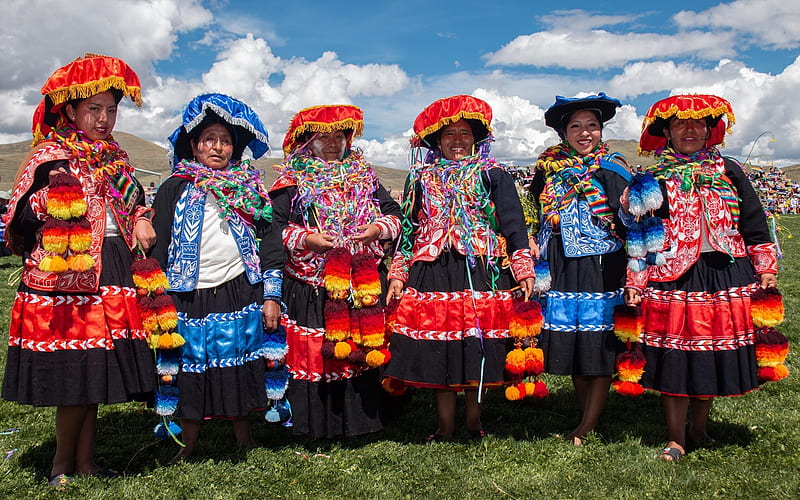
Peru, a country on the western edge of South America, is a land of ancient civilizations, stunning landscapes, and an extraordinary culinary scene. The fusion of indigenous traditions, Spanish influence, and contemporary innovation has created a unique blend of culture and cuisine. Let’s embark on a journey to explore the captivating interplay of food and culture in Peru.
1. Inca Heritage: A Glimpse into the Past
The Inca Empire was once the largest and most advanced civilization in pre-Columbian America. Today, Inca ruins, such as Machu Picchu, offer insights into the country’s rich history and the sophisticated engineering and architectural prowess of the Inca people.
2. Ceviche: The Pride of Peru
Ceviche, a dish of fresh seafood cured in lime or lemon juice and spiced with aji peppers, is the pride of Peruvian cuisine. It reflects the country’s rich coastal resources and its obsession with flavors that burst with citrus and heat.
3. Pachamanca: Earth Oven Cooking
Pachamanca is an ancient Peruvian cooking method that involves preparing a variety of meats and vegetables, marinating them in herbs and spices, and cooking them underground on hot stones. The process is not just about food; it’s a spiritual and communal experience.
4. Lima: Culinary Capital of South America
Lima, the capital of Peru, is renowned as the culinary capital of South America. The city boasts numerous award-winning restaurants that serve up innovative Peruvian dishes while preserving the authenticity of traditional flavors.
5. Chicha: Ancient Fermented Beverage
Chicha is a fermented corn beverage that dates back to pre-Inca times. It is still widely consumed in various forms throughout Peru, with regional variations in flavor and preparation.
6. Music and Dance: The Rhythms of Peru
Peru’s music and dance traditions are diverse, with influences from indigenous, African, and European cultures.
a. Marinera: The Marinera is a graceful dance that represents the courting rituals of the coastal region. It is known for its elegant and intricate footwork.
b. Huayno: Huayno is a traditional Andean dance and music style that varies by region. It features lively melodies, and the lyrics often tell stories of love and nature.
7. Potato Diversity: The Andean Staple
Peru is the birthplace of the potato, and the country is home to a remarkable diversity of potato varieties. Indigenous communities have been cultivating and preserving these potatoes for centuries.
8. Amazon Rainforest: Biodiversity and Indigenous Culture
The Amazon rainforest, which covers a significant portion of Peru, is a sanctuary of biodiversity and the cultural home of numerous indigenous communities. Exploring the Amazon offers a chance to appreciate the intricate relationship between people and nature.
9. Anticucho: Grilled Delicacy
Anticucho is a popular street food in Peru, consisting of skewered and grilled beef heart or other meats. It’s often seasoned with a spicy marinade and served with boiled potatoes and corn.
10. Festival of Inti Raymi: Sun Celebration
The Festival of Inti Raymi, held in Cusco, is a reenactment of the Inca celebration of the winter solstice. It showcases traditional Inca rituals and dances, offering a captivating glimpse into the country’s indigenous culture.
9. Suriname: A Cultural and Culinary Tapestry
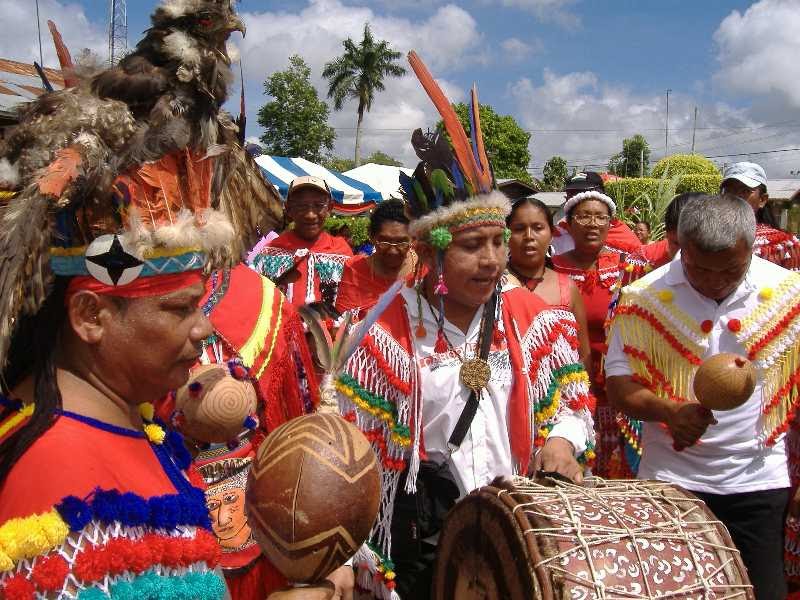
Suriname, a small country on the northeastern coast of South America, is a diverse and vibrant nation where a medley of cultures coexists harmoniously. The country’s rich history, stemming from its indigenous, African, Indian, Indonesian, and Dutch influences, has given rise to a unique blend of culture and cuisine. Let’s embark on a journey to explore the captivating interplay of food and culture in Suriname.
1. Multicultural Heritage: Creole, Hindustani, Javanese, and More
Suriname is home to a rich tapestry of ethnic groups, each contributing to the country’s culture and cuisine.
a. Creole Cuisine:
- Creole cuisine in Suriname features a blend of African, Dutch, and Indigenous influences. Dishes like pom (cassava and chicken) and moksi alesi (mixed rice) reflect this cultural fusion.
b. Hindustani Flavors:
- Hindustani immigrants have brought flavors like roti (flatbread) and dhal (lentil soup) to Surinamese cuisine. These dishes have become an integral part of the country’s culinary landscape.
c. Javanese Influence:
- Javanese immigrants have introduced dishes such as saoto (a spicy Javanese soup) and moksi meti (mixed meat dishes) to the country’s culinary repertoire.
2. Roti: A Beloved Dish
Roti, a flatbread often served with curried vegetables and chicken or beef, is a beloved and iconic Surinamese dish. It reflects the Indian influence in the country’s culinary heritage.
3. Music and Dance: A Vibrant Melody
Surinamese culture is enlivened by various musical genres, including kaseko and kawina, as well as traditional dances like the kawina dance. These rhythms are part of the country’s rich cultural fabric.
4. Bamboo Band: A Unique Tradition
The bamboo band is a traditional Surinamese musical ensemble consisting of bamboo tubes of varying lengths, which produce melodic sounds when struck. This unique tradition is an integral part of the country’s cultural celebrations.
5. Peperpot Nature Park: Historical and Natural Heritage
Peperpot Nature Park, near Paramaribo, is a historical coffee and cacao plantation turned nature reserve. It reflects Suriname’s colonial past and offers a serene environment for exploration.
6. Indigenous Art and Craftsmanship
Indigenous communities in Suriname have a rich tradition of art and craftsmanship. They create intricately designed baskets, wood carvings, and textiles that showcase the country’s cultural diversity.
7. Street Food: A Culinary Adventure
Suriname’s street food scene is a culinary adventure. From saoto soup to bara (fried lentil balls) and bakabana (fried plantains), the streets come alive with flavors and aromas.
8. Paramaribo: Historic Capital
The historic district of Paramaribo, Suriname’s capital, is a UNESCO World Heritage site. It features well-preserved Dutch colonial architecture and a blend of cultures that make the city an exceptional destination for exploring history and culture.
9. Roti Shop: Iconic Dining
Roti shops are a common sight in Suriname, and locals and visitors alike frequent them for delicious and authentic roti dishes. These eateries offer an opportunity to savor the country’s culinary diversity.
10. Surifesta: A Cultural Celebration
Surifesta, a cultural festival in Paramaribo, showcases the country’s cultural diversity through music, dance, and food. It’s a vibrant celebration of Surinamese culture and heritage.
10. Uruguay: A Blend of Culture and Gastronomy
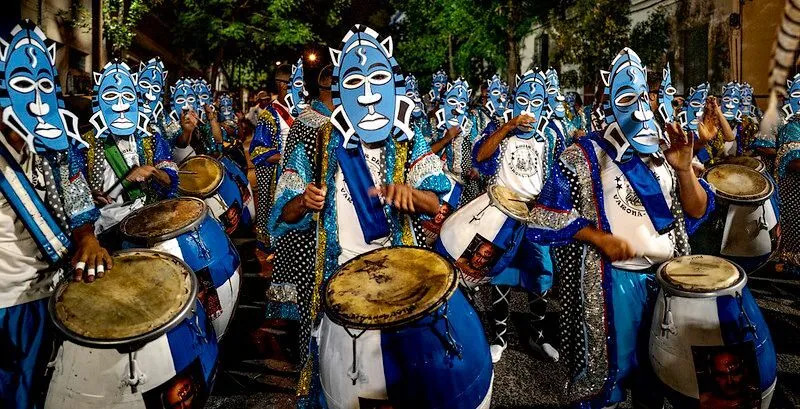
Uruguay, a small South American nation nestled between Brazil and Argentina, is a country that celebrates a unique blend of culture and cuisine. With a strong Spanish heritage and a profound love for beef, Uruguay has developed a rich culinary tradition. Let’s embark on a journey to explore the captivating interplay of food and culture in Uruguay.
1. Asado: A National Passion
Asado is the heart and soul of Uruguayan cuisine. This style of barbecue revolves around grilling beef, sausages, and offal over an open flame, often using wood or charcoal. Asado is more than just a meal; it’s a social and cultural event. Families and friends gather to enjoy the art of grilling, often accompanied by a glass of tannin-rich red wine.
2. Mate: A National Drink
Mate, a bitter tea made from the leaves of the yerba mate plant, is a beloved and symbolic beverage in Uruguay. It is sipped from a shared gourd through a metal straw called a bombilla. Mate drinking is a communal and social activity, reflecting the country’s culture of togetherness.
3. Candombe: Rhythms of Montevideo
Candombe, a traditional Afro-Uruguayan music and dance style, is an essential part of the cultural heritage of Uruguay. This rhythmic and energetic genre is deeply rooted in the history of the country, and it is often celebrated during Carnival season.
4. Parrillas: The Art of Grilling
Parrillas, or barbecue restaurants, are a ubiquitous sight in Uruguay. Here, you can savor the best cuts of meat, cooked to perfection and served with simple yet flavorful accompaniments like chimichurri sauce and potatoes.
5. Tannat Wine: A National Pride
Tannat, a red wine grape variety, is the emblematic wine of Uruguay. The country’s winemakers have mastered the art of producing rich and robust tannat wines that pair wonderfully with the hearty flavors of Uruguayan cuisine.
6. Ciudad Vieja: The Old City of Montevideo
Montevideo, the capital of Uruguay, is home to Ciudad Vieja, the historic old town. Strolling through its cobblestone streets, admiring colonial architecture, and enjoying street art offer an opportunity to immerse in the country’s history and culture.
7. Chivito: A Uruguayan Classic
Chivito is a beloved Uruguayan sandwich that features a tender slice of grilled beef steak, often topped with ham, cheese, lettuce, tomato, and condiments. It’s a hearty and satisfying dish that showcases the country’s love for beef.
8. Carnival: A Colorful Celebration
Uruguay’s Carnival season is a vibrant and exuberant celebration that features parades, colorful costumes, and music. The candombe rhythms and the use of drum ensembles play a central role in these festivities.
9. Punta del Este: A Seaside Retreat
Punta del Este, a popular coastal city, is known for its beautiful beaches, luxurious resorts, and vibrant nightlife. It’s a place where you can experience the laid-back and upscale side of Uruguayan culture.
10. Milanesa: A Comfort Food
Milanesa is a breaded and fried meat cutlet, similar to a schnitzel, and it’s a comfort food staple in Uruguay. Often served with mashed potatoes or as a sandwich, it’s a simple and delicious dish enjoyed by locals and visitors alike.
11. Venezuela: A Cultural and Culinary Mosaic
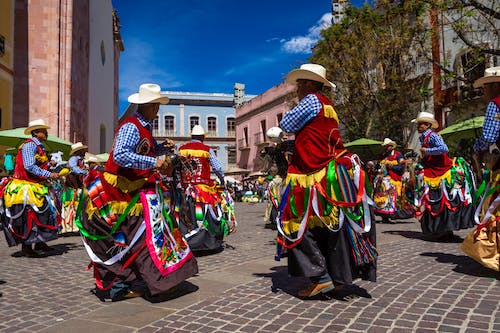
Venezuela, a country located in the northern part of South America, is a land of diverse cultures, rich history, and a remarkable culinary tradition. Its unique blend of indigenous, European, African, and Caribbean influences has shaped both its culture and cuisine. Let’s embark on a journey to explore the captivating interplay of food and culture in Venezuela.
1. Arepas: The Heart of Venezuelan Cuisine
Arepas are the staple food of Venezuela and a symbol of its culinary identity. These round, flatbreads made from maize dough can be filled with a variety of ingredients, including cheese, meat, beans, and avocado. They are a versatile and delicious meal enjoyed throughout the country.
2. Music and Dance: Rhythms of Venezuela
Venezuela is known for its vibrant music and dance traditions, which reflect the fusion of various cultures.
a. Joropo: Joropo is a traditional Venezuelan dance and music style that celebrates the country’s rural culture. It is characterized by fast footwork and lively melodies.
b. Gaita: Gaita is a genre of music associated with the Christmas season in Venezuela. It features lively rhythms and often humorous lyrics.
3. Arepa Reina Pepiada: A Beloved Variation
Arepa Reina Pepiada is a famous Venezuelan arepa filled with a delicious combination of shredded chicken, avocado, mayonnaise, and cilantro. It’s a favorite variation that showcases the country’s love for bold and flavorful fillings.
4. Caracas: A Cultural Hub
Caracas, the capital of Venezuela, is a bustling metropolis known for its cultural richness. The city is home to numerous theaters, museums, and galleries that celebrate the country’s art and heritage.
5. Hallaca: A Holiday Delight
Hallaca is a traditional Venezuelan dish, often enjoyed during the Christmas season. It’s a tamale-like creation made from maize dough filled with a mixture of meats, olives, and raisins, all wrapped in plantain leaves.
6. Angel Falls: Natural Wonder
Angel Falls, located in Canaima National Park, is the world’s highest uninterrupted waterfall. This natural wonder is a testament to Venezuela’s breathtaking landscapes and biodiversity.
7. Pabellón Criollo: A National Dish
Pabellón Criollo is a national dish that consists of shredded beef, black beans, rice, and fried plantains. It represents the diverse elements of Venezuelan cuisine and culture, all coming together on one plate.
8. El Sistema: Music for All
El Sistema is a renowned Venezuelan program that provides free music education to children, aiming to nurture musical talents and promote social inclusion. It has produced world-class musicians and orchestras.
9. Cachapa: Sweet or Savory Delight
Cachapa is a traditional Venezuelan corn pancake made from fresh corn kernels. It can be served sweet, with cheese and condensed milk, or savory, with cheese and meats, offering a versatile culinary experience.
10. Carnival: A Festive Celebration
Venezuela’s Carnival is a lively and colorful celebration featuring parades, music, dance, and vibrant costumes. It’s a time when the country comes alive with a spirit of joy and unity.
Wanderer’s Word
Each South American country has its unique story to tell, expressed through the vibrant melodies of music, the bold flavors of street food, and the captivating traditions passed down through generations. These diverse cultures and cuisines invite us to celebrate life, embrace the richness of heritage, and savor the authentic tastes that make South America a remarkable and unforgettable journey.
“El que mucho abarca, poco aprieta.”
“He who grasps too much, holds little.”

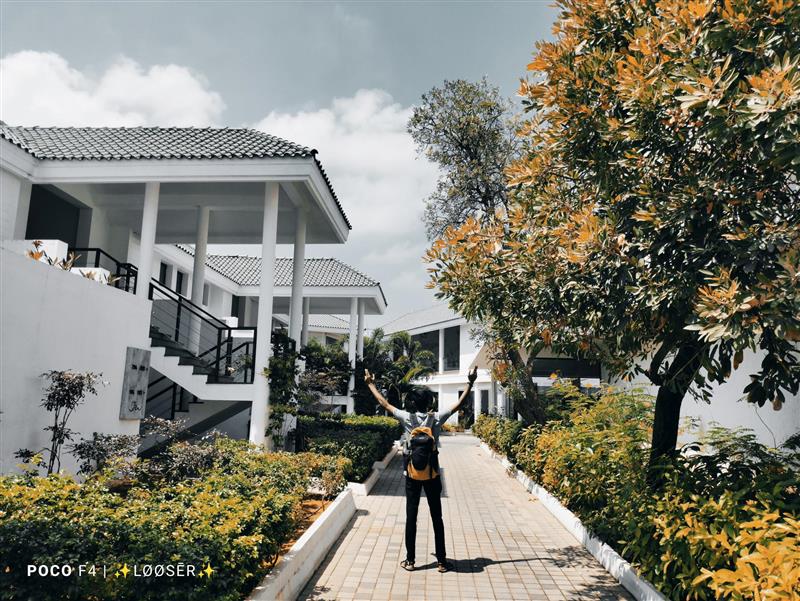



Great delivery. Great arguments. Keep up the amazing work.